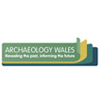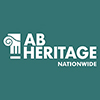Address
Unit 4, Bentley Court
Finedon Road Industrial Estate
Finedon Road Industrial Estate
Wellingborough
Northamptonshire
Northampton
NN8 4BQ
England UK
Location Map
Thames Valley Archaeological Services (Wellingborough) Serves The Following Areas
Thames Valley Archaeological Services (Wellingborough) Serves The Following Counties
Thames Valley Archaeological Services (Wellingborough) Serves The Following Towns
Find Thames Valley Archaeological Services (Wellingborough) in
Archaeological Consultants Sponsored Companies
Sponsored Link
Archaeology Wales works across the UK offering independent services to businesses, communities and individuals, including: consultancy, fieldwork services, desk-based services, surveys, finds analysis and programmes of community engagement.
Sponsored Link
We are a development-focused archaeological consultancy offering responsive, timely and bespoke solutions to minimise historic environment project risk. As well as archaeological advice and guidance, we provide a wide range of early non-intrusive heritage assessment works and site survey.
Thames Valley Archaeological Services (Wellingborough) Branches
Unit 21 Apple Business Centre, Frobisher Way, Taunton, TA2 6BB
77a Hollingdean Terrace, Brighton, BN1 7NH
47-49 De Beauvoir Road, Reading, RG1 5NR
 UK
UK Ireland
Ireland Scotland
Scotland London
London













